At Adina Designed Interiors we can cater for all your cabinetry needs. We pride ourselves on good honest advice, professionalism and quality work built to last.
Commercial Office Layout Ideas: Maximising Productivity and Well-being
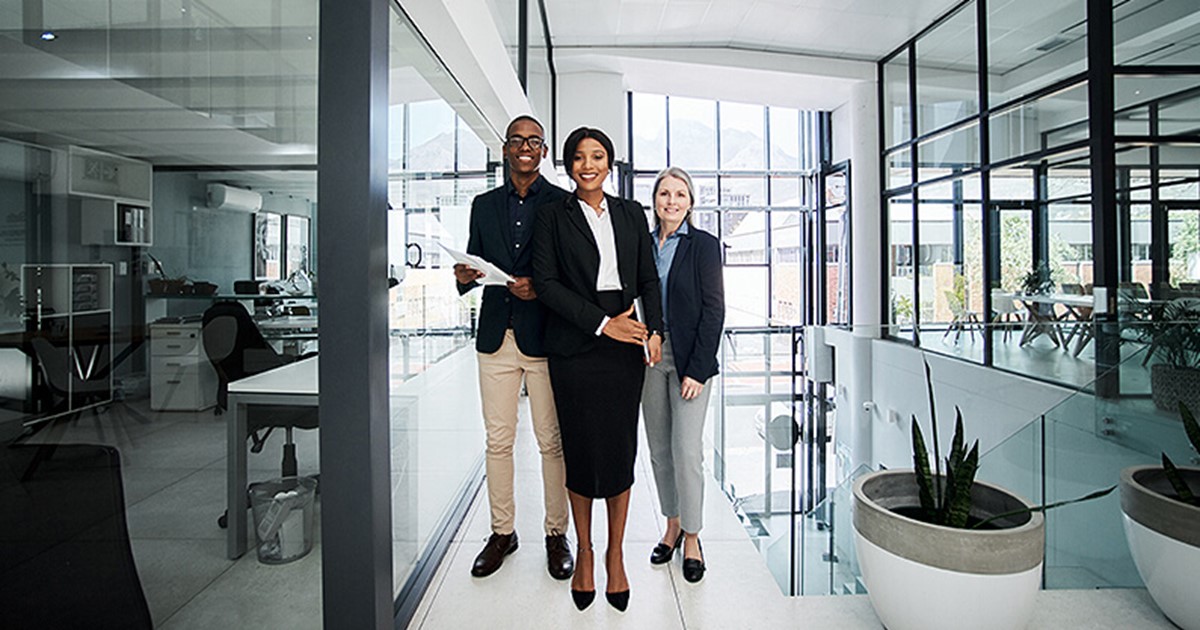
Are you looking to revamp your office space to boost productivity and enhance employee well-being? You're not alone. Many businesses are rethinking their office layouts to create environments where employees can thrive. But where do you start?
In this article, we’ll explore various office layout ideas that will not only maximize productivity but also promote employee well-being. We’ll cover everything from open-plan offices to biophilic design, providing practical tips and inspiring examples along the way.
The power of a well-designed office
A well-designed office space is more than just aesthetically pleasing; it’s a powerful tool for enhancing productivity and employee wellbeing. Studies have shown that the physical environment can significantly impact job satisfaction, efficiency, and overall health.
Imagine walking into an office that feels welcoming, energizes you, and makes you want to be productive. With the help of our tips below or our office fit out Bundaberg team, your office layout can incorporate the elements necessary for a beautiful space to be in, increased production and employee satisfaction.
Open-plan offices
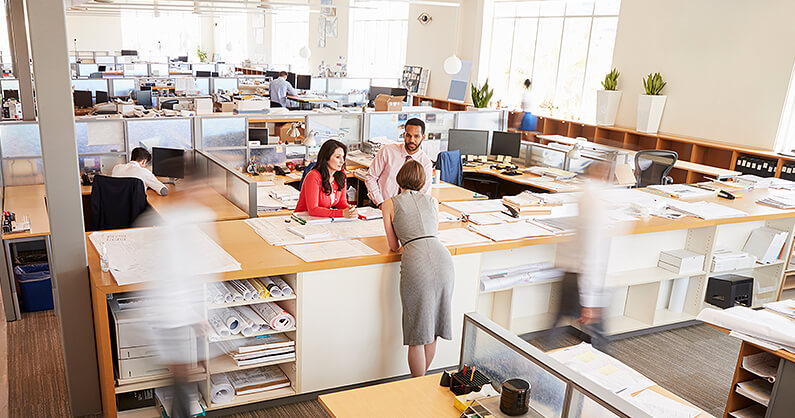
Open-plan offices have become increasingly popular for their potential to foster collaboration and communication. By eliminating walls and partitions, these layouts encourage spontaneous interactions and idea sharing along with a strong sense of team involvement. However, they are not without their challenges.
Benefits of open-plan offices
Open-plan offices offer several benefits, such as
- increased collaboration
- better or increased communication
- flexibility in furniture arrangement
Employees can easily interact, share ideas, and work together on projects, which can lead to increased creativity, innovation and hence productivity.
Challenges of open-plan offices
Despite their benefits, open-plan offices can also pose challenges. Noise levels can become a significant issue, leading to distractions and decreased concentration. Additionally, the lack of privacy can be a concern for some employees who may find it difficult to focus in an open environment or those who prefer their own space with an element of privacy.
Tips for open-plan offices
To mitigate these challenges, consider incorporating designated quiet zones where employees can retreat when they need to focus. Noise-cancelling headphones and sound-absorbing materials can also help reduce the effect of distractions. By addressing these issues, you can create a more balanced and productive open-plan office.
Private workspaces
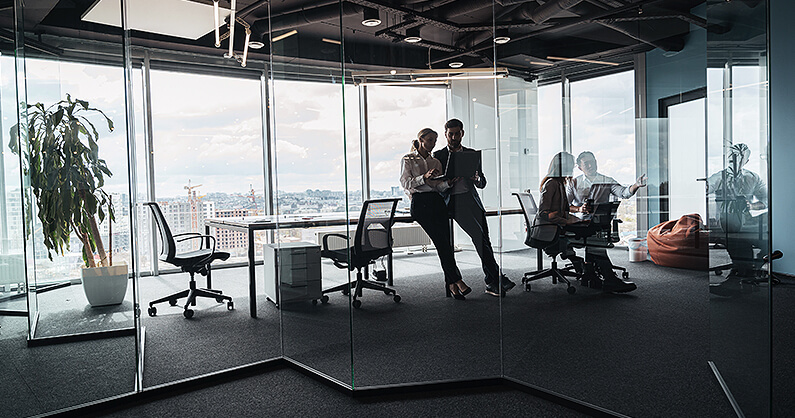
While open-plan offices have their advantages, private workspaces are essential for tasks that require deep concentration. These spaces provide employees with the privacy they need to focus and complete their work efficiently. The nature of the work has a bearing on decisions about providing private workspaces.
Types of private workspaces
Private workspaces can take various forms like:
- individual offices
- cubicles
- dedicated quiet rooms.
Each type offers different levels of privacy and can be tailored to meet the specific needs of your employees.
Benefits of private workspaces
Private workspaces allow employees to concentrate on their tasks with a minimum level of interruptions. This is particularly important for roles that involve detailed work, such as writing, design work, data analysis, or coding. Providing private workspaces can enhance productivity and job satisfaction.
Balancing privacy and collaboration
The key to successful office design is about striking a balance between private workspaces and collaborative areas. By offering both, you can cater to the diverse needs of your employees and create an environment that supports various work styles.
Flexible workstations
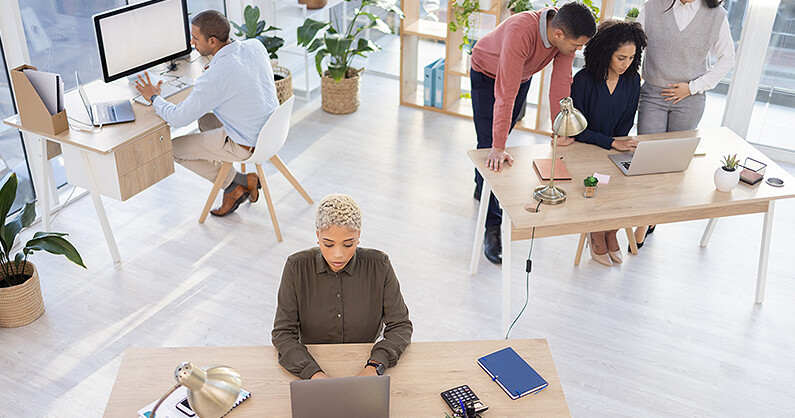
Flexibility can be crucial in today’s dynamic work environment. Flexible workstations allow employees to choose where and how they work based on the task at hand. This approach empowers employees and can lead to increased productivity and job satisfaction as they realise they have the privilege to choose according to their needs.
Hot desking and activity-based working
Hot desking and activity-based working are popular flexible workstation strategies. Hot desking involves employees using any available desk rather than having an assigned workspace.
Activity-based working allows employees to choose different workstations based on their tasks, such as collaborative spaces for meetings or quiet areas for focused work.
Benefits of flexible workstations
Flexible workstations promote a sense of autonomy and can lead to higher job satisfaction. They also optimise office space, as desks are not left unused when employees are out of the office. Additionally, flexible workstations can foster a more dynamic and adaptable work environment however some employees prefer to maintain ownership over their own space and work materials. It is worthwhile keeping flexibility in design in mind.
Implementing flexible workstations
To successfully implement flexible workstations, provide a variety of work areas that cater to different tasks. Ensure that employees have access to the necessary technology and resources to work efficiently from any location within the office. The office fit out Bundaberg team is well-placed to help you create a flexible workstation-focused office layout at your business.
Collaborative spaces
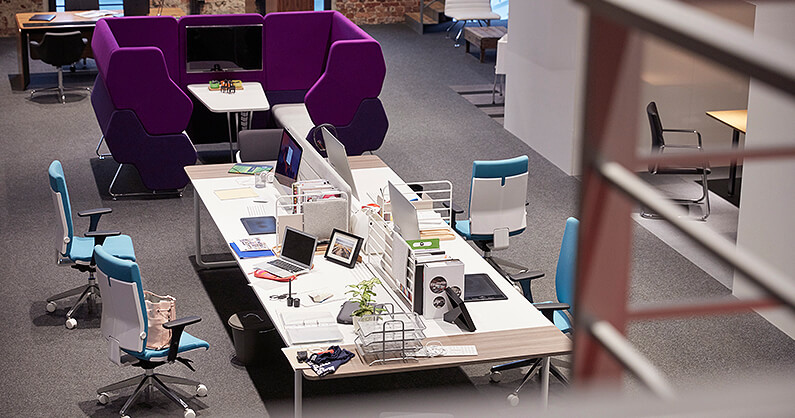
Collaborative spaces are essential for fostering teamwork and innovation. These areas provide employees with the opportunity to brainstorm, share ideas, and work together on projects.
Types of Collaborative Spaces
Collaborative spaces can include:
- conference rooms
- breakout areas
- casual meeting spots.
Each type serves a different purpose and can be tailored to fit the needs of your team.
Benefits of collaborative spaces
Collaborative spaces encourage communication, creativity, and problem-solving. They also provide a change of scenery, which can boost morale and reduce stress.
Designing effective collaborative spaces
To design effective collaborative spaces, consider the layout, furniture, and technology. Ensure that these areas are comfortable and equipped with the necessary tools for productive meetings. Flexible seating arrangements and writable surfaces can enhance creativity and collaboration.
Breakout areas
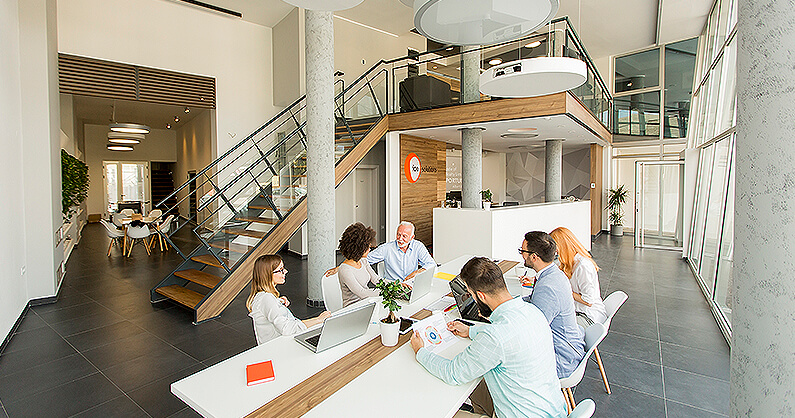
Breakout areas provide employees with a space to relax, recharge, and socialize. These areas are essential for maintaining a positive work-life balance, teamwork and promoting overall well-being.
Types of breakout areas
Breakout areas can include lounges, kitchens, and recreational spaces. Each type offers different amenities and can be designed to meet the preferences of your team.
Benefits of breakout areas
Breakout areas offer employees a place to unwind and take a break from their work. This can reduce stress, prevent burnout, and increase overall job satisfaction. Social interactions in breakout areas can also strengthen team bonds and improve cooperative workplace culture.
Creating inviting breakout areas
To create inviting breakout areas, consider comfortable seating, aesthetic decor, and amenities such as coffee machines and snack bars. Providing a variety of options can cater to different preferences and make these areas more appealing.
Technological integration

Integrating technology into your office design is essential for supporting productivity and collaboration. From video conferencing tools to smart office solutions, technology can enhance the way your team works.
Essential office technology
Some essential office technology includes high-speed internet, video conferencing tools, and project management software. These tools facilitate communication and streamline workflows.
Smart office solutions
Smart office solutions, such as automated lighting and climate control, can improve energy efficiency and create a more comfortable work environment. These technologies can also enhance security and reduce operational costs.
Conclusion
Revamping your office layout can have a significant impact on productivity and employee well-being. By incorporating elements such as open-plan offices, private workspaces, flexible workstations, ergonomic furniture, collaborative spaces, breakout areas, and technological integration, you can create a dynamic and supportive work environment. The key to bringing this about is to contact the office fit out Bundaberg team to help you design the most productive and comfortable workspace possible.
Remember, the key to a successful office design is to cater to the diverse needs of your employees. By providing a variety of spaces and amenities, you can create an environment where everyone can thrive.
If you're ready to transform your office space and boost productivity, consider partnering with our expert team. We offer personalized office design solutions tailored to your unique needs. Get in touch today to learn more and start creating the perfect workspace for your team.
Adina Designed Interiors
Queensland Wide Service
Bundaberg
2/35 Enterprise St
Bundaberg Central, QLD 4670
Ready to have your design vision come to life?
Get our creative team of designers and craftsmen to help you create a memorable space.